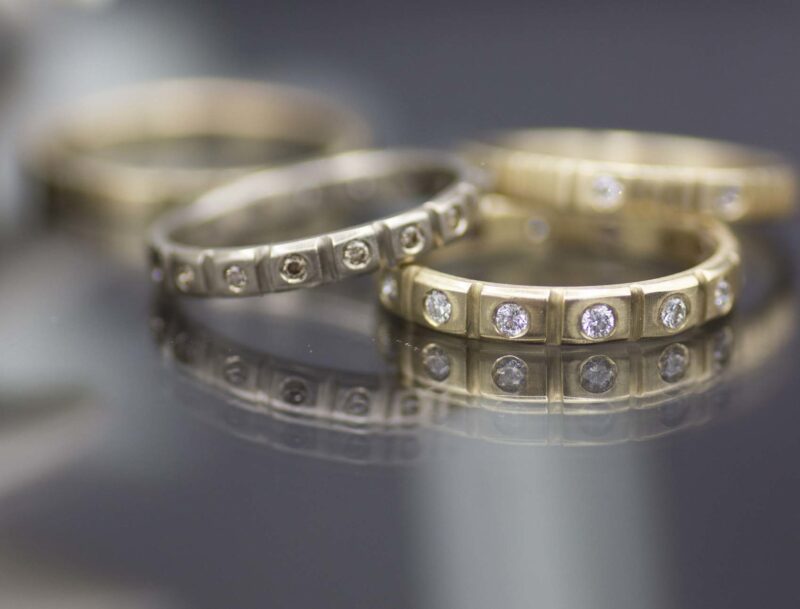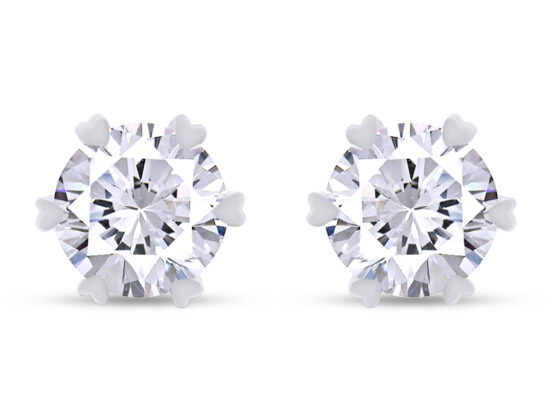As couples plan for the most special moment of their lives, they must consider both aesthetics and ethics. The ever-growing trend of lab-grown diamond engagement rings is allowing them to make thoughtful choice that honors both factors.
Lab-grown diamonds are beautiful stones with an ethical background; they offer couples the opportunity to express their commitment without compromising the environment or human rights. This article examines how lab grown engagement rings can provide couples with a unique blend of beauty and morality.
The Beauty of Lab-Grown Diamonds: Exploring the Benefits of Ethical Engagement Rings
From the moment a couple gets engaged, they are met with a myriad of decisions. One of the most important choices is selecting an engagement ring. While diamonds may seem like a timeless classic, ethical considerations have made lab-grown diamonds increasingly popular among couples who want to make sure their ring is responsibly sourced and socially conscious. Lab grown diamonds are not only beautiful in appearance but come with added benefits that make them ideal for couples looking for an alternative to mined stones.
For starters, lab-grown diamonds cost up to 40% less than traditional mined diamond rings because they do not require mining or transportation costs associated with natural stones. Additionally, these manmade gems are conflict-free and carry no risk of unethical labor practices being used in production processes. This makes it easier for customers to rest easy knowing their purchase has been ethically produced and certified as such by various organizations like Responsible Jewellery Council (RJC).
Not only are lab-grown diamond rings more affordable than traditional ones but they also boast excellent quality standards compared to naturally occurring counterparts – often exhibiting higher clarity ratings due to fewer blemishes or impurities on the surface. Furthermore, these synthetic gems offer even greater levels of customization since buyers can choose from any size or shape when ordering online without having to worry about availability constraints that come with searching for loose mined rocks at jewelers’ stores.
Finally, while aesthetics will always remain subjective there’s no denying that lab-grown diamond rings offer unique beauty all their own – sparkling cuts ranging from princesses, to round brilliant or cushion shapes ensure you’ll find something special regardless of your partner’s individual tastes! All this means choosing between an antique heirloom piece passed down through generations or opting for a modern look created specifically just for them has never been easier nor more sustainable than today thanks in part to emerging technology behinds manufactured gemstones such as Lab Grown Diamonds!
Eco-Friendly and Sparkling: Understanding the Allure of Lab-Grown Diamond Engagement Rings

Lab-grown diamond engagement rings combine the beauty of traditional diamonds with the eco-friendly benefits of being lab created. In recent years, jewelry lovers have been increasingly attracted to this option because it provides a way for couples to reduce their environmental impact in an area that is often overlooked: engagement rings. It also offers a unique opportunity for customers who want a one-of-a-kind piece without compromising on quality or style.
Lab-grown diamonds are chemically identical to mined diamonds and can be cut and polished just as finely but are not only ethical but more affordable too due to the lack of labor associated with mining them from the Earth’s surface. Furthermore, these pieces come with certificates ensuring they are conflict-free and adhere to fair labor practices along their supply chain proving that you don’t have to sacrifice your values in order to get something beautiful.
Beyond their sustainable qualities, lab-grown diamond engagement rings appeal aesthetically too—they sparkle brighter than natural diamonds because they possess fewer imperfections making them perfect for special occasions such as engagements and weddings alike! For those looking for something truly special, customizing options like adding colored stones or engravings add even more personality. With so many advantages working together, its no wonder why lab-grown diamond engagement rings have become increasingly popular over time!
The Growing Popularity of Synthetic Diamonds for Engagements: Examining their Impact on the Jewelry Industry
The jewelry industry is in the midst of a revolution as synthetic diamonds are becoming increasingly popular for engagement rings. Lab-grown diamonds offer a more ethical and economical alternative to traditional mined diamonds, while still providing stunning aesthetics. As consumers become aware of the environmental and human rights issues associated with mining practices, an increasing number of couples are choosing lab-grown diamond engagement rings to commemorate their commitment. The impact these stones have had on the jewelry industry has been immense.
Consumers now expect greater transparency about where their gemstones come from and what process was used to create them—a demand that many retailers were not prepared for when lab-grown diamond rings first began gaining traction in recent years. To stay competitive, jewelers must adapt to accommodate customers’ ethical considerations when it comes to selecting an engagement ring or other fine jewelry piece; this means offering both natural stones as well as quality synthetic alternatives that meet rigorous standards regarding clarity, size, color and durability.
It is important to note that while laboratory-created gems do provide numerous advantages over traditionally mined ones—including cost savings due to reduced labor costs—they can also be difficult for some individuals or organizations within the jewelry industry accustomed only to natural stones. This challenge requires education about why certain procedures such as laser drilling or fracture filling may be necessary with synthetic gems but not with natural ones; understanding these nuances will ensure customers receive quality products regardless of whether they choose a lab grown diamond or one from natures handiwork. 


